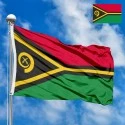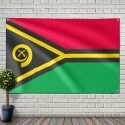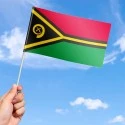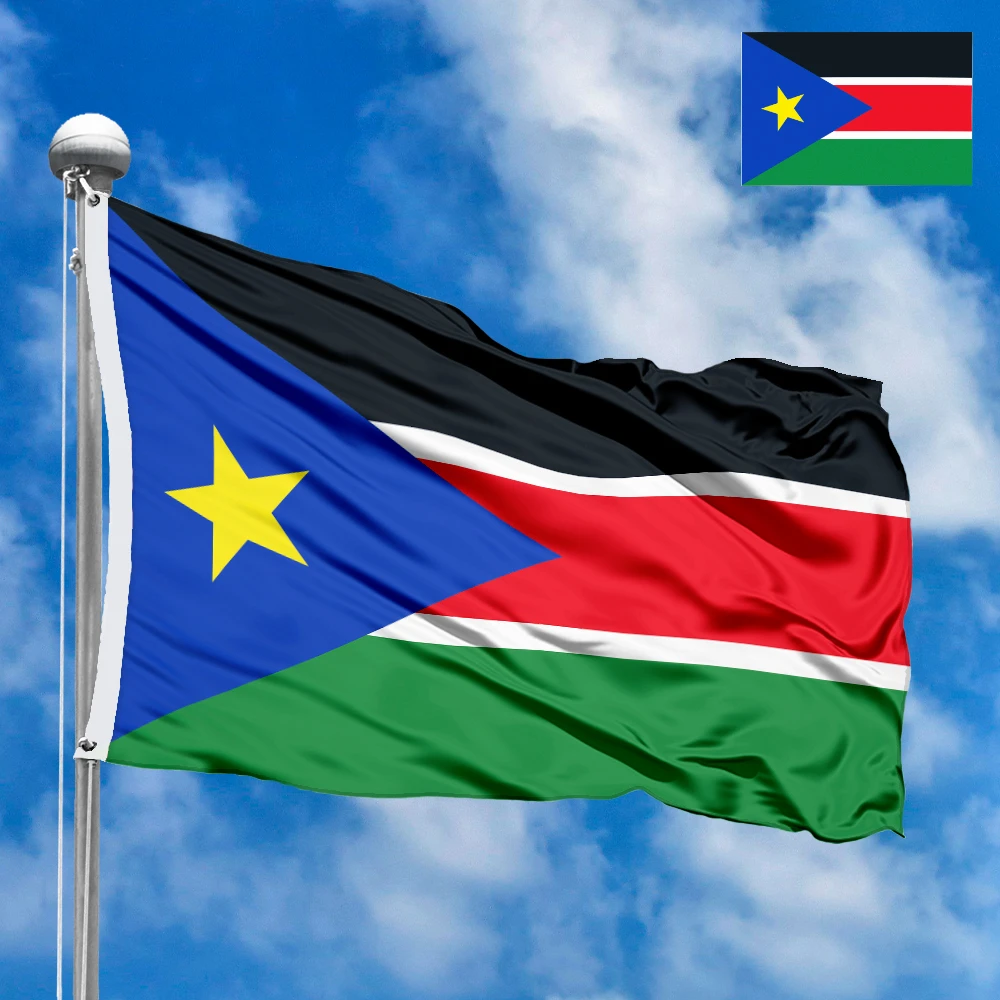The flag of Vanuatu is a powerful and iconic national symbol, rich with meaning that reflects the country's unique history, its culture, and the aspirations of its people. Adopted on February 18, 1980, the flag's design beautifully encapsulates the spirit of a nation that emerged from a complex colonial past to forge its own sovereign identity.
Design and Symbolism
The flag features a red horizontal stripe on the top half and a green horizontal stripe on the bottom. These two stripes are separated by a thin, black-bordered Y-shaped design that runs horizontally across the flag. On the hoist side, the stripes form a black triangle with a yellow border. Inside this triangle is a golden emblem: a boar's tusk encircled by two crossed namele fern fronds.
-
Red: The top red stripe represents the blood of the people and the nation's shared struggle for independence. It is a reminder of the sacrifices made in the fight against colonialism and for the right to self-determination.
-
Green: The bottom green stripe symbolizes the wealth and fertility of the islands' land. It represents the rich agriculture that sustains the people and their deep connection to the earth.
-
Black Triangle: The black triangle on the hoist side represents the ni-Vanuatu people themselves, the indigenous inhabitants of the islands. Its triangular shape also visually alludes to the shape of the islands, which rise from the sea.
-
The Y-Shape: The yellow Y-shaped border that divides the red and green fields is a crucial element. It represents the shape of the islands of Vanuatu, which form a Y-shape in the South Pacific. More profoundly, the yellow color symbolizes the light of the Gospel spreading over the islands, reflecting the strong Christian faith of the populace. The Y-shape itself points to the nation's journey towards a brighter future.
-
Boar's Tusk and Namele Ferns: This central emblem is a potent symbol of traditional culture. The boar's tusk is a symbol of prosperity, peace, and traditional wealth, and is highly valued in Vanuatu. The two crossed namele fern fronds are symbols of peace, and are traditionally worn by chiefs during ceremonies. The number of leaves on the fronds, 39, is said to represent the 39 members of the first Parliament of Vanuatu at the time of independence.
History and Adoption
Before its independence, Vanuatu was known as the New Hebrides, a unique colonial territory jointly administered by both Britain and France in a system known as a condominium. As the country prepared to gain its sovereignty in the late 1970s, a design competition was held to create a new national flag. The winning design was selected by the Vanua'aku Party, which led the nation to independence. The final design was officially created by an artist named Kalontas Malon.
The flag was officially adopted on February 18, 1980, ahead of the formal declaration of independence on July 30, 1980. The adoption of the flag was a crucial step in the nation-building process, providing a powerful, unified symbol for a diverse set of islands and cultures.
Flag Size and Proportions
The official ratio of the flag of Vanuatu is 19:36 (height to width). The design is carefully constructed to ensure the correct proportions of all its elements, from the width of the yellow stripes to the size and placement of the central emblem. The geometric precision of the design makes it both distinctive and recognizable.
The Country, Region, and Meaning for Residents
Vanuatu is an archipelago nation consisting of approximately 83 islands in the South Pacific Ocean. It is part of the Melanesia region. Its geography, history of dual colonial rule, and rich indigenous cultures are all woven into the fabric of its national identity.
For the people of Vanuatu, the flag is not just a national symbol; it is a representation of their collective identity, their land, and their beliefs. The green and red stripes speak of their deep connection to the earth and their history. The black triangle and the central emblem honor their traditional customs and the unity of the ni-Vanuatu people. The flag is a source of immense pride, a reminder of the nation's hard-won independence and a beacon of hope for the future.
Interesting Facts
-
The flag's Y-shape, representing the Gospel, is a very unique feature among national flags and highlights the country's deep Christian heritage.
-
The boar's tusk and namele fronds are not just symbols; they are real, tangible items used in traditional ceremonies. The tusk represents wealth and status, while the ferns symbolize peace.
-
The flag's design was modified slightly from the original competition winner to ensure the correct visual balance and symbolism.
The flag of Vanuatu is a beautiful and meaningful emblem, a testament to the nation's resilience, its vibrant culture, and its journey as a sovereign nation in the Pacific.
In the demonstration images, full-size flags are shown with proportions of 2:3, and hand-held flags with proportions of 1:2.








 Waving flag
Waving flag
 Sizes:
Sizes:
 Round flag
Round flag
 Sizes:
Sizes:
 Rectangular flag 2:3
Rectangular flag 2:3
 Sizes:
Sizes: